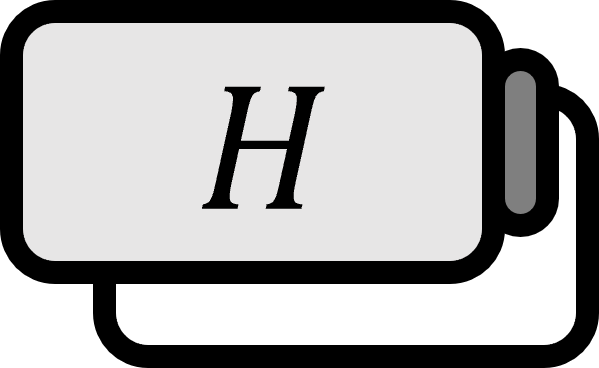Hilbert Space Adjoint Operators
Buildup1
Let us assume that we are given bounded linear operators $T : K \to H$ in Hilbert spaces $\left( H, \left\langle \cdot , \cdot \right\rangle_{H} \right)$ and $\left( K, \left\langle \cdot , \cdot \right\rangle_{K} \right)$. Then, for any fixed element $\mathbf{w} \in H$, the following defined $\Phi : K \to \mathbb{C}$ becomes a linear functional $\Phi \in K^{ \ast }$.
$$ \Phi \mathbf{v} := \left\langle T \mathbf{v} , \mathbf{w} \right\rangle_{H} $$
According to the Riesz Representation Theorem, in the Hilbert space $K$, there must uniquely exist an element $T^{ \ast } \mathbf{w} \in K$ for all $\mathbf{v} \in K$ that satisfies the following.
$$ \Phi \mathbf{v} = \left\langle \mathbf{v} , T^{ \ast } \mathbf{w} \right\rangle_{K} $$
Although we cannot know what $T^{ \ast } \mathbf{w} \in K$ specifically is for the previously fixed element $\mathbf{w} \in H$, $T^{ \ast }$ can be seen as the operator $T^{ \ast } : H \to K$ that maps $\mathbf{w}$ to $T^{ \ast } \mathbf{w}$. From this discussion, the following concept can be introduced.
Definition
Let $H,K$ be a Hilbert space. For a bounded linear operator $T : K \to H$, the $T^{ \ast } : H \to K$ that satisfies the following is called the adjoint operator of $T$.
$$ \left\langle T \mathbf{v} , \mathbf{w} \right\rangle_{H} = \left\langle \mathbf{v} , T^{ \ast } \mathbf{w} \right\rangle_{K} ,\quad \forall \mathbf{v} \in K $$
Explanation
Also known as dual operator. It is also denoted by $T^{\#}$.
The adjoint operator has properties such as:
- $T^{ \ast }$ is linear and bounded.
- $\left( T^{ \ast } \right)^{ \ast } = T$
- $\left\| T^{ \ast } \right\| = \left\| T \right\|$
Meanwhile, when $H = K$, adjoint operators that have the following good properties are called by a more special name. Let $H$ be a Hilbert space and $T : H \to H$ be linear and bounded1.
- If $T = T^{ \ast }$, then $T$ is called self-adjoint.
- If $TT^{ \ast } = T^{ \ast }T = I$, then $T$ is called unitary.
If $T$ is self-adjoint, then for all $\mathbf{v} , \mathbf{w} \in H$,
$$ \left\langle T \mathbf{v} , \mathbf{w} \right\rangle = \left\langle \mathbf{v} , T \mathbf{w} \right\rangle $$
If $T$ is unitary, then for all $\mathbf{v} , \mathbf{w} \in H$,
$$ \left\langle T \mathbf{v} , T \mathbf{w} \right\rangle = \left\langle \mathbf{v} , \mathbf{w} \right\rangle $$
From the definition, unitary $T$ is reversible,
$$ T^{-1} = T^{ \ast } $$
Especially, unitary operators have a very important property related to the normal orthogonal basis.
